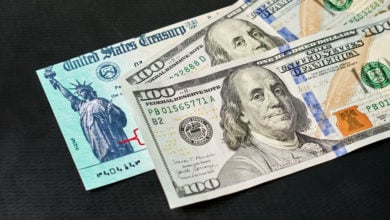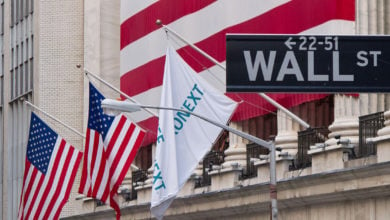Rising prices. Growing unemployment. For millions of workers across the United States, times are tough—and getting tougher. For those already without jobs and living in poverty, the last decade of cutbacks in social programs has meant ever-growing hardships.

Before Hurricane Katrina ravaged the Mississippi delta, economic forecasts were, on the whole, rosy. Now, the story has changed.
“Katrina pushes unemployment rate higher,” the AP reported on Oct. 7. “Katrina contributes to drop in spending,” read an Oct. 1 Washington Post headline.
There is no doubt that the devastation caused by Hurricanes Katrina and Rita will ripple throughout the U.S. economy. The Congressional Budget Office estimated that 279,000 people lost their jobs due to Katrina alone. (AP, Sept. 29) That number may grow. The hundreds of thousands who fled the region to other parts of the country mean that the unemployment crisis will not be regional—it will be felt around the United States.
But the weaknesses in the U.S. economy uncovered by the hurricanes are not the result of a natural disaster. They are symptoms of the capitalist economy, characterized by economic booms followed by crises of overproduction.
In fact, signs of trouble for the U.S. economy could be seen in the months leading up to the September hurricanes. On July 22, U.S. Federal Reserve chair Alan Greenspan warned of “significant uncertainties” about the economy.
Rising energy prices
An obvious sign of the “uncertainties” that the U.S. top central banker referred to is the rising price of oil and gasoline. The price of a barrel of crude oil has risen from an average of $31 in 2003 to peaks of over $70 in September. Unlike the economic data usually far removed from workers’ day-to-day reality, soaring gasoline prices—in some cases to over $3 per gallon—and impending heating-oil price hikes are being felt by millions.
This impact will be felt by more and more people in a variety of ways. As a core industry that is basic to all others, price hikes in energy have a multiplier effect that lead to price hikes in all other sectors of the economy, from consumer goods to services and public utilities.
What is behind the oil price hikes? Many observers note that the oil industry is among the most centralized in the capitalist world. World production and refinement is concentrated in the hands of a handful of giant corporations. Supply is regulated by governments largely beholden to Washington and Wall Street. The monopoly character of oil production under capitalism leads to artificially high prices—even apart from the price gouging that takes place in the wake of particular events like Hurricane Katrina.
World capitalist overproduction
But monopoly pricing is not the source of the current surge in oil prices. What is driving the increase is the massive growth in world industrial production—especially in China, but also in India and other super-exploited countries. China is now the second largest consumer of petroleum products, after the United States.
For the last decade, China’s economy has been growing at a rate of between 7 and 9 percent per year—an astronomical rate compared to the “normal” U.S. economic growth rate of 2 to 3 percent. A May 24, 2004, CNN article noted, “In the first three months of 2004, when China’s economy grew at a breakneck pace of 9.7 percent, demand for oil in China grew almost 1 million barrels a day.”
Industrial production—the main engine for oil consumption—grew by over 17 percent in 2004, according to the CIA World Factbook.
While the Chinese government still retains its roots in the 1949 socialist revolution, the main growth sector in the Chinese economy is intimately tied to the world capitalist economy. Between 1990 and 2001, the share of total Chinese exports due to foreign direct investment rose from 17 percent to 51 percent. (Chen Zhilong, “Two Decades of Utilizing FDI in China,” 2002, quoted in Monthly Review, July-August 2004) That trend has only escalated.
This is not to mention the other deep-rooted links between the Chinese and world capitalist economy—the massive export-oriented sector of the Chinese economy, or the tremendous store of U.S. Treasury bills that are essentially IOUs that the U.S. government has issued to China.
In other words: the surge in oil prices is a reflection of a boom in world capitalist production. Such booms inevitably lead to overproduction—the uniquely capitalist phenomenon of producing more goods than can be sold for a profit.
This fact is being pointed to by a number of bourgeois analysts. “Nine of the 10 recessions in the United States since World War II were preceded by a spike in oil prices,” said James Hamilton, an economics professor at University of California San Diego. (Financial Times, Aug. 26, 2005) Booms precede busts.
The ‘housing bubble’
The surging oil prices are not the only indication of a coming economic crisis. The rise in housing prices—what Alan Greenspan called in June “a froth in some local markets”—is a sign of speculation and overproduction in another fundamental sector of the U.S. economy.
An Oct. 5 Business Week article points to two signs of an impending crisis in the housing market. First, the number of unsold new homes reached its highest level since January 2000. Second, housing “affordability”—a measure designed to reflect the ability of families to buy a home—reached its lowest level since September 1991. These two facts are a sure sign of overproduction.
The housing sector of the economy, like the oil and energy sector, has particular importance in the overall economy. A slowdown of home construction is felt in construction as well as in the production of basic materials like lumber and glass.
Under capitalism, production is based on profits, not on social needs. A 2004 report by the National Law Center on Homelessness and Poverty estimated that there are 3.5 million people experiencing homelessness in any given year, with nearly half of those children. The impact of Hurricanes Katrina and Rita will certainly drive that figure up for 2005.
Yet home building is based on profit. The National Association of Realtors estimated that 23 percent of all homes purchased in 2004 were for investment alone. Another 13 percent were luxury vacation homes. (San Francisco Chronicle, July 7, 2005) That means that over a third of all homes sold in 2004 were completely removed from fulfilling human needs.
Home building on the basis of profits has led to what is referred to as the “housing bubble”—prices rising beyond the standards expected by supply and demand. According to the same Chronicle article cited above, housing prices in the first quarter of 2005 had soared by 12.5 percent over one year—far beyond the 3.1 percent level of inflation.
Far from reflecting the demand for housing, the boom in housing prices is the result of monetary intervention by the U.S. Federal Reserve. Low interest rates over the past three years have had the effect of driving for-profit investment into the housing market in the expectation of high returns.
The Oct. 4 New York Times carried an article hinting at an upcoming bust in the housing market. “Executives and directors at many of the nation’s largest development companies sold stock at a record pace this summer,” writer Julie Creswell reported.
“Market specialists often view heavy stock sales by corporate insiders as a possible indicator that share prices [that is, corporate profits—Ed.] are headed lower. Some analysts say that the share sales by home builders are reminiscent of the heavy dumping of stock by technology company executives just before the technology bubble burst in 2000.” That sell-off marked the beginning of the last recession in the United States.
“The previous times we’ve had insider selling that was that high, it was followed by a 20 percent decline in the index of home building stocks,” Creswell quoted Mark A. Lopresti, senior quantitative analyst with Thompson Financial.
Militarism and the economy
Compounding these signs of impending crisis within the for-profit, commodity-driven sector of the economy is the overarching political project of U.S. imperialism for world domination. It is impossible to separate the capitalist economy from the U.S. war drive in the Middle East and throughout the world.
Vast spending on the military-industrial complex, involving huge capitalist corporations coordinated by the Pentagon, was a key factor in rescuing U.S. capitalism from the ravages of the Great Depression of the 1930s. But since the Vietnam War, military spending has proven unable to act as the same sort of stimulant that it did during World War II. While military spending has contributed to softening the impact of capitalist downturns, the boom-and-bust cycle of the U.S. capitalist economy has continued unabated.
In an Oct. 7 vote, the U.S. Senate unanimously approved a $445 billion budget for the Pentagon. That included an extra $50 billion to fund the war in Iraq, bringing the official price tag for the war in Iraq and Afghanistan so far to $350 billion. (Reuters, Oct. 7)
That vast infusion of funds into the military sector of the economy has been largely funded by government borrowing. The U.S. federal debt was $7.9 trillion in September, according to a Sept. 17 AP report. The budget deficit for the fiscal year 2005 budget was $317 billion, and is expected to grow in the coming year.
The military sector of the economy has features that distinguish it from the rest of the capitalist economy. While a certain part of military production enters the market as commodities, the vast majority has as its only function to enlarge the military stockpile until it is destroyed in war. Its primary value is to open up new parts of the world’s markets and resources to exploitation by the corporations whose interests the Pentagon serves and to serve as a threat to rivals anywhere in the world—either other imperialist powers or oppressed countries that dare to defy U.S. interests.
The current U.S. military adventure in Iraq is aimed at securing the vast oil resources in Iraq and dominating the entire Middle East—all in the never-ending quest for greater profits. That project has not yet succeeded, nor does it seem likely in the short term, due to the determined resistance of the Iraqi people to the U.S. occupation.
Growing signs of crisis
The early signs of the coming economic crisis are already being felt. Inflation—the scourge of the working class eroding the purchasing power of wages—is on the rise. Unemployment rose to an official rate of 5.1 percent in September—but that does not include the millions who have been out of work for more than six months. “Millions of potential workers who dropped out of the labor force during the recession four years ago have not returned as expected and thus are not counted in the official unemployment statistics,” the AFX news agency reported on July 14.
CNN/Money reported on Sept. 28 that credit card delinquencies hit a new record.
Not that everyone in the United States is feeling the pinch. The 400 richest people in the United States are now worth $1.13 trillion—a 12 percent increase over the past year. (AFP, Sept. 23, 2005) The number of millionaires rose to 8.9 million, or 3 percent of the U.S. population. (AFP, Sept. 28, 2005)
Already, certain key sectors of the economy are in a downturn. On Oct. 8, Delphi—the largest U.S. auto parts supplier—filed for bankruptcy, putting the jobs and pensions of its 185,000 employees worldwide in jeopardy. On Oct. 3, London’s Financial Times reported that GM and Ford had suffered heavy sales losses in the second quarter. “Both companies are drawing up plans to bring production capacity more in line with sales, including plant closures,” the Times reported.
The airline industry has also taken a hit. “The financially crippled U.S. airline industry can be strengthened only by grounding planes, merging operations and enduring bankruptcies to help carriers drastically cut labor costs,” was the way the Sept. 29 Atlanta Journal-Constitution described industry testimony before Congress.
As with every crisis facing U.S. workers, African American, Latino and other oppressed nationalities stand to suffer the most.
The character of the coming crisis
It is impossible to say at this moment how severe the coming U.S. economic crisis will be. But it will be felt around the world.
The United States and China accounted for more than 50 percent of the growth in world gross domestic product in 2003. The two countries account for over one-third of the world’s purchasing power, according to a Feb. 12, 2004, “Global Economic Perspectives” report by the British USB Investment Bank.
With the U.S. and Chinese economies increasingly intertwined through investment, trade and lending, any crisis felt by one will be immediately felt in the other. That, in turn, would ripple throughout the economies of the entire capitalist world.
Such a crisis will also have severe political repercussions. The U.S. ruling class’s drive to assert its complete control over the world’s markets and resources—most importantly the Middle East’s oil resources—can only be exacerbated by economic crisis. Under capitalism, depression and war are twin plagues.
Challenges for the working class
Economic recession and depression lay the objective basis for a class-wide struggle against the handful of corporate bankers and generals who rule the country. Illusions of “buying in” to the capitalist system are stripped away in the most brutal way.
But in order to be successful, that struggle needs careful preparation. Economic crisis historically throws the working class movement on the defensive—at least initially.
What is most important is developing a program of action that corresponds to the needs and consciousness of the working class. Only a political struggle that unites the struggles against layoffs, unemployment and poverty with the political struggles against war and racism can effectively challenge the capitalist class in its hour of political and economic crisis.
Preparing for the crisis is imperative for all working-class organizations. That means, first and foremost, building a revolutionary party rooted in the day-to-day struggles of the working class and oppressed peoples and tested in leading the political struggles against the capitalist ruling class.
In the United States, 3.5 million people are homeless.
Photo: EPA/Larry W. Smith






